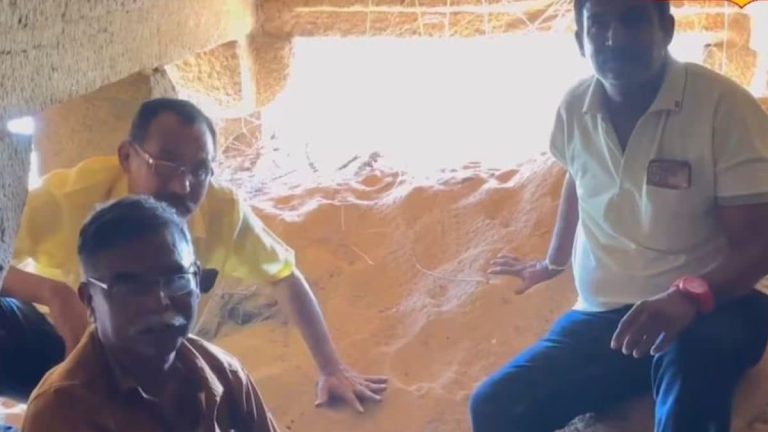Last updated:

The inscription appears to be part of the Sangam literature.
Writer Muthalankurichi Kamarasu traveled to Tirunelveli district to research and write more about the Pachaiyar and Thamirabani rivers River) intersection.
The Thamirabarani River flows through the Tirunelveli and Thoothukudi districts of Tamil Nadu and empties into the Gulf of Mannar. It is considered a holy river in Sanskrit texts and was famous for its pearl and conch fishery and trade during the early Pandya era. A man named Mutthalangurichi Kamarasu was so impressed by its history that he wrote more than 60 books about the Tamirabarani River.
For 25 years, he has been walking along the banks of the Tamira Barani River, writing the history of the riverside in books. In an effort to learn more about the river, the man reportedly discovered a 424-year-old inscription on its banks.
Writer Muthalankurichi Kamarasu traveled to Tirunelveli district to research and write more about the Pachaiyar and Thamirabani rivers River) intersection. At that time, there was no road to the Tamirabarani river. He walked for about three kilometers across the fields to the confluence of the rivers Pachiyar and Tamirabarani.
He reportedly discovered an ancient stone tablet on the bank. The stone wall was discovered buried in river sand during last year's floods. As they entered the passage, they saw a statue of Pilaiyar with the symbol of two fishes on the upper part and an inscription in the middle.
This inscription states that the mandapam was built in the month of Vaikasi in 1600 by Venkatesa Ayyan, son of Surappa Ayyan. The first letter of looks a bit obscure. However, when you read it, it looks like Sangam literature. The stone hall has the symbol of two fishes. It can be seen from this inscription that it has been 424 years since this stone mandapam was built.
After the stone tablet was discovered, it was covered with sand due to rain. Muthalangurichi Kamarasu requested restoration of the sandstone-covered hall.
